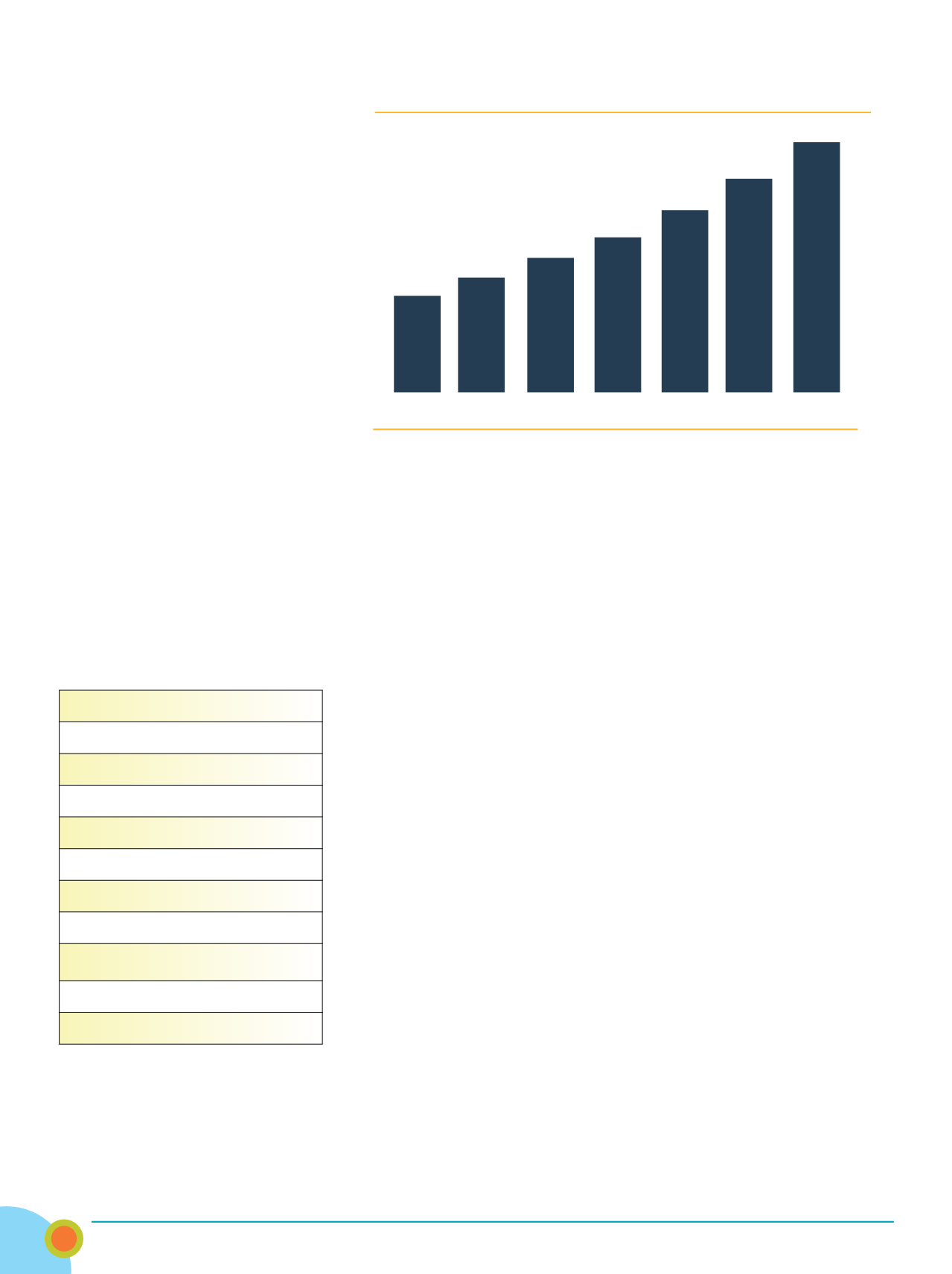

store in less than an hour. As the robot
travels down each aisle, it automatically
compiles and processes huge amounts
of big data, imaging every product and
barcode in every aisle. Once com-
pleted, the Space Genius scan provides
retailers and manufacturers with the
precise location of everything in the
store, as well as all instances of price
tag discrepancy, missing price tags,
empty shelving and more.
The Space Genius also provides
retailers with an interactive 3D map of
their store, precisely depicting each
product exactly as it is displayed on the
shelf. This realistic, virtual store can
either be displayed on the company’s
Web site for consumer use and shop-
ping, or toured remotely by retail execu-
tives at headquarters.
“With one click, customers can
virtually navigate through any scanned
store anywhere in the world and view
products on the shelf exactly as they
are,” said the company. “As shoppers
tour the aisles, they can pull products
off the shelf, spin them around to read
more product information and add them
to a shopping cart to be shipped or
delivered by local courier.”
Included with the Space Genius is
a 3D planogram application. “Unlike
traditional methods of creating plano-
grams, which are based primarily on
static, theoretical inputs, the 4D Space
Genius intelligently generates dynamic
‘realograms’ based on actual, scanned
data,” says 4D.
Then there’s Pepper, a humanoid
robot that Pizza Hut expects to have in
its restaurants in Singapore by the end
of this year. A joint effort with Master-
Card and created by Softbank Robotic,
Pepper not only will take orders, pro-
vide product information and facilitate
payment, it will also be able to access
customer and sales information in order
to make personalized recommendations
and offers. And at the Carnegie Mellon
University store, visitors will find An-
dyVision, an autonomous robot that fus-
es image-processing, machine-learning
algorithms, a database of images of
the store’s products, a basic map of the
store’s layout and navigation sensors to
take thorough inventories and tell staff
when an item is running low in stock or
merchandise is out of place.
“The idea for AndyVision was born
out of me being a shopper. I go to a
lot of stores and I find it very difficult to
find the items I want, and sometimes
I leave when I don’t find what I want,”
said Priya Narasimhanm, head of the
Intel Science and Technology Center for
Embedded Computing at CMU.
Best Buy, meanwhile, has begun
using Chloe, a robot that retrieves
products that customers request from
a kiosk, and Target recently began a
trial of Tally, a robot that travels through
aisles and takes inventory.
Some pretty smart machines are
being deployed in the outdoor market,
as well. Although created largely to
enhance e-commerce customer ser-
vice, The North Face has been working
with one of the most intelligent artificial
machines, partnering in the development
of the first mobile app experience to put
Watson, the powerful artificial intel-
ligence computer owned by IBM, to use
in a retail environment. The application
was designed to help online shoppers
pick the perfect jacket for their respec-
tive wants and needs without having
to bungle through product pages on
the small mobile screen. Watson asks
questions such as where, when and
during which activities the jacket will be
used, and then based on the feedback,
crunches data and makes a recom-
mendation. During initial trials, says The
North Face, users who provided feed-
back rated the experience a 2.5 out of 3,
and 75 percent said they’d use it again.
Osprey Packs likewise recently intro-
duced its Packfinder digital tool which
“allows customers to take a step-by-step
journey through the decision-making
process of finding the perfect pack for
the intended activity,” announced the
company. Customers answer several
simple questions such as the primary
activity the pack will be used for, trip
length, desired features and price range.
Packfinder then determines the best
Osprey product solution and creates a
report card explaining the selection.
Again, both Packfinder and the TNF-
Watson tool were created for online
sales, but it’s naïve not to notice how
Jobs with 99% Probability
of Being Automated
Telemarketers
Title Examiners, Abstractors and Searchers
Sewers, Hand
Mathematical Technicians
Insurance Underwriters
Watch Repairers
Cargo and Freight Agents
Tax Preparers
Photographic Process Workers and Processing
Machine Operators
New Accounts Clerks
Library Technicians
Source: Oxford University
Global
Estimated Enterprise Robot Shipments (thousands)
Source: International Federation of Robotics; Business Insider Intelligence
Thermal Loss During 1 Hour
Running in - 5C
Source: Sheffield Hallam University’s Centre for Sport & Exercise Science; kora
290
2015E 2016E 2017E 2018E 2019E 2020E 2021E
339
397
465
544
637
745
SHOLA
BASE LAYER
1
0
4
-2
-3
--4
-5
-6
-7
-8
MERINO
BASE LAYER
POLYESTER
BASE LAYER
Mean Relative Temperature Changes (C)
Inside
Outdoor
|
Summer
2016
22
















